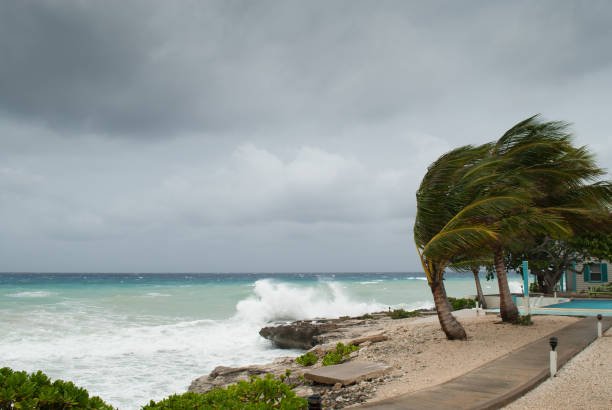How did tropical cyclone Eloise impact the environment? Tropical Cyclone Eloise made landfall on January 23, 2021, near the coastal city of Beira in Mozambique. The storm brought torrential rainfall, strong winds, and widespread flooding across southern Africa, causing significant damage to the environment.
How Tropical Cyclone Eloise Impacted the Environment
Below we will explore the environmental impacts of Tropical Cyclone Eloise, including its effect on ecosystems, wildlife, and natural resources, as well as the implications for recovery and mitigation efforts.
Ecosystems and Natural Resources
- Destruction of habitats: The intense rainfall and flooding caused by Eloise led to extensive damage to coastal and inland ecosystems. Mangroves, which play a crucial role in stabilizing coastlines and providing habitats for numerous species, experienced significant erosion and dieback. Inland, the storm caused the destruction of various habitats, such as riverine forests and wetlands, which are crucial for maintaining biodiversity and supporting a wide range of species.
- Soil erosion and sedimentation: Eloise’s heavy rainfall resulted in severe soil erosion, particularly in areas with deforested or degraded land. This erosion led to an increase in sedimentation in rivers and coastal waters, which can have negative impacts on water quality and aquatic ecosystems.
- Damage to coral reefs: The increased sedimentation in coastal waters can harm coral reefs by reducing light penetration and smothering corals, leading to decreased photosynthesis and growth. Coral reefs are essential for supporting marine biodiversity and providing coastal protection.
Wildlife Impacts
- Direct mortality and injury: The strong winds, torrential rain, and flooding associated with Eloise caused the death and injury of numerous wildlife species. The destruction of habitats further exacerbated this impact, as many animals were unable to find shelter from the storm.
- Disruption of breeding and nesting: The timing of Eloise coincided with the breeding and nesting season for many bird species. The destruction of habitats and the flooding of nesting sites led to the loss of eggs and nestlings, impacting bird populations.
- Increased vulnerability to disease and predation: The displacement of wildlife due to habitat destruction and flooding increased the risk of disease transmission and predation, as animals were forced into new, unfamiliar territories.
Mitigation and Recovery Efforts
- Habitat restoration: In the aftermath of Eloise, efforts have been made to restore damaged ecosystems, including the replanting of mangroves and the rehabilitation of coastal habitats. These measures not only help to support biodiversity but also contribute to climate change adaptation and coastal protection.
- Erosion control and reforestation: Initiatives to reduce soil erosion and promote reforestation can help mitigate the negative impacts of future cyclones on the environment. Sustainable land-use practices and afforestation projects can contribute to healthier ecosystems and greater resilience to storms.
- Monitoring and conservation efforts: Continued monitoring of affected ecosystems and wildlife populations is crucial for understanding the long-term impacts of Eloise and guiding conservation efforts. This information can be used to prioritize species and habitats in need of protection and inform management strategies to minimize the impacts of future cyclones.
Conclusion
Tropical Cyclone Eloise had severe consequences for the environment in southern Africa, from the destruction of habitats and the displacement of wildlife to the contamination of natural resources. The storm highlighted the need for better preparedness, adaptation, and mitigation strategies to minimize the impacts of future cyclones on the region’s ecosystems and biodiversity. Restoring damaged habitats, implementing sustainable land-use practices, and monitoring affected species are all essential steps toward achieving this goal.

